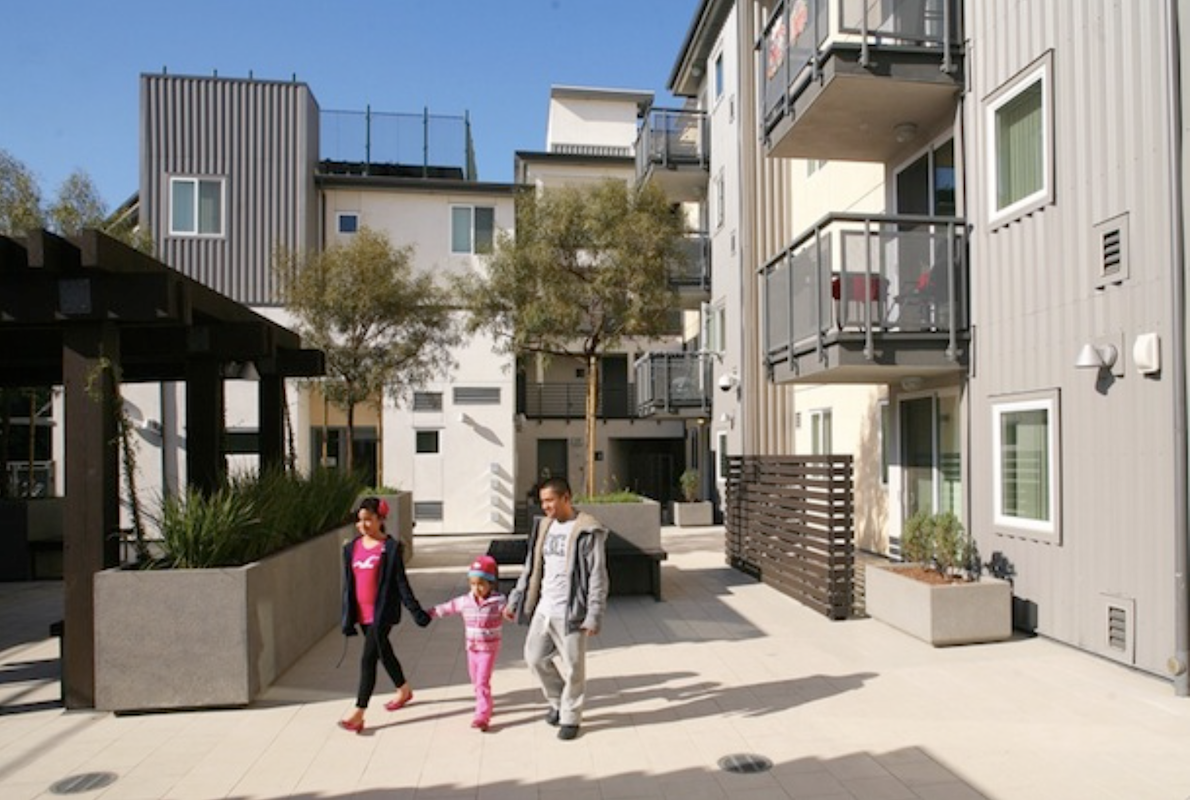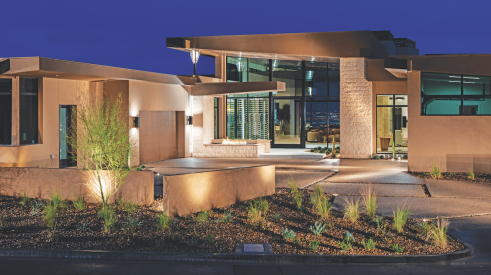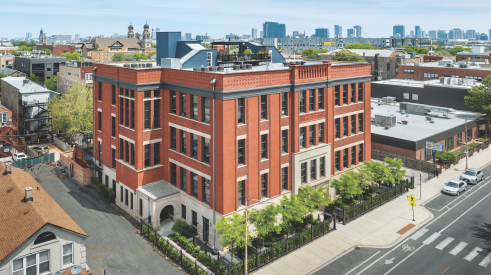Home builders are shifting their focus from greenfields to smaller-scale infill projects close to jobs, transportation, and commercial opportunities. A successful project can become a catalyst for neighborhood transformation.
For that to happen, builders must navigate the rezoning process, win over the neighbors, and ensure the availability of mortgage financing. Nobody knows this better than Sarah Peck, who builds new homes in distressed areas around suburban Philadelphia. “You have to be sophisticated about understanding mortgage finance,” says the president of Progressive Housing Ventures, Malvern, Pa. “That’s gotten more challenging with the more stringent underwriting requirements, but financing is still out there.”
5 guidelines for successful infill
- Pick sites that are accessible to jobs, transportation, shopping, and other amenities.
- Be patient and persistent. Rezoning and design review can be a lengthy process.
- Nurture relationships with neighbors and municipal leaders. Listen to their concerns and demonstrate why your proposed project will benefit everyone.
- Make sure mortgage financing will be available to prospective buyers.
- Create a design concept that respects the architectural context of the neighborhood.
Toby Bozzuto, president of Bozzuto Development Co., Greenbelt, Md., a large-volume multi-family developer in the Mid-Atlantic region, stresses the importance of good design. “The key is to respect the historic fabric of these neighborhoods,” says Bozzuto. “It doesn’t have to look the same, but it has to add something that resonates with customers so they will choose to live there.”
Many builders have turned a profit with market-rate infill, but there’s also a dire need for affordable housing, especially in working-class communities. Home builders might consider partnering with large employers such as hospitals, school districts, and universities, says Robin Hughes, president of Abode Communities in Los Angeles. “Using the land resources of those employers — I think that’s the connection,” says Hughes.
Revitalizing Historic Anaheim
In the historic Colony district of Anaheim, Calif., Brookfield Homes plans to build a total of 640 homes on a 40-acre brownfield site previously occupied by warehouses, a lumberyard, and a lock factory. It took almost nine years to complete the environmental cleanup process, says John O’Brien, VP of urban infill for the Costa Mesa, Calif.-based builder.
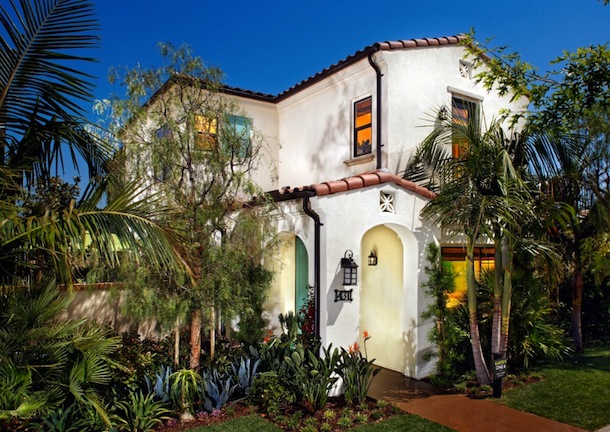
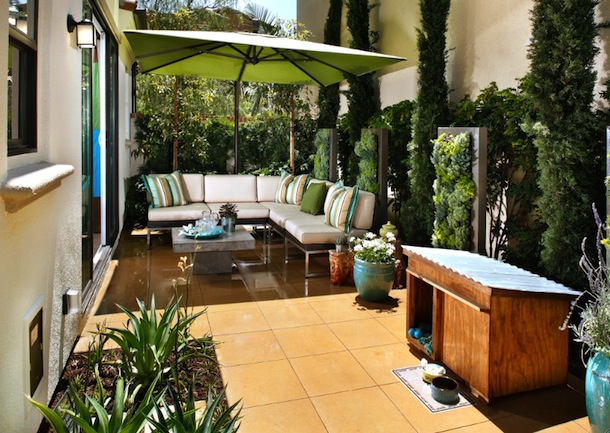
With their stucco walls, simple building forms, tile roofs, and deep, recessed windows, the Garden Houses at Colony Park have a Spanish flavor that is in keeping with the architecture of Anaheim’s historic district. Garden House side yards maximize private outdoor living space on small lots. Visible at lower left is a doggie door that connects the laundry room to the yard.
The new community, Colony Park, will offer a variety of townhomes and single-family homes. The first two phases of townhomes are sold out. The single-family Garden Houses were introduced in response to buyer requests for more yard space, O’Brien says. “Our surveys showed that small-lot detached would be very successful,” he says.
Robert Hidey Architects of Irvine, Calif., designed 62 detached homes on 35 x 75-foot lots, for a net density of 12.2 DUA. The lots, which have rear-loaded garages, utilize a side yard to maximize private outdoor living space. The open floor plans make living areas feel larger and flow seamlessly from side to side. Expansive windows and glass doors flood the interiors with natural light.
Three plans are offered, ranging from 1,724 to 2,071 square feet. To date, 32 Garden Houses have been sold at prices from the mid-$400,000s to the mid-$500,000s. “There’s virtually no competition for new-home product at this price point,” says O’Brien. Garden Houses sited next to amenities such as the Pool House — “a world-class resort tucked into the infill residential” — have sold for more than $500,000, he adds.
The Snowball Effect
Arbor Heights in Norristown, Pa., featured in the October 2010 issue of Professional Builder, is in a historic district that used to be known for its upscale mansions. Progressive Housing Ventures built 12 affordably priced townhomes on a particularly blighted city block and sold them to first-time buyers.
“Since the project was completed there’s been a nice flurry of activity,” says Peck. Existing homes are being upgraded and vacant buildings are being renovated for sale or rent. A building across the street from Arbor Heights that had been empty for 10 years was turned into a restaurant. “It’s not a direct cause and effect, but there is a lot of synergy with the local businesses,” she says.
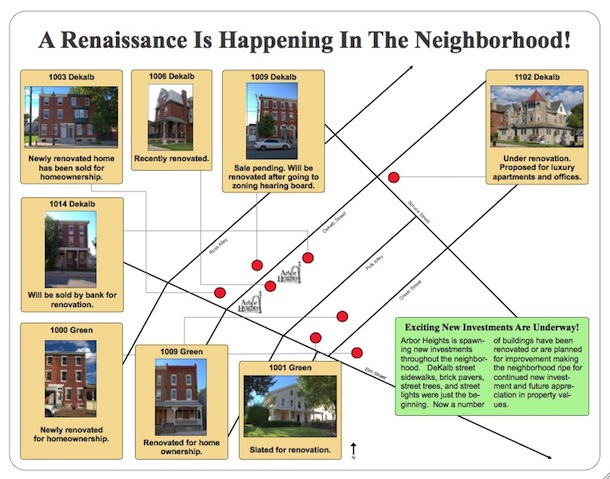
Arbor Heights, a new infill community in Norristown, Pa., has spawned street improvements and the renovation of old buildings throughout the neighborhood.
In the beginning, Peck had to deal with a lot of negativity. “It turned out that a lot of it was perceptual and left over from the 1990s,” she says. “The locals were too close to the situation. In fact, things had been moving in the right direction in the last couple of decades. Sometimes it takes a fresh perspective from someone who’s not from the neighborhood.”
Peck acknowledges that there’s a fair amount of risk associated with any infill project. “I had absolutely no idea if there was a market for Arbor Heights,” she says. “But I found that with the right sales pitch and the right financing package, I really could sell there.”
She notes that the Community Reinvestment Act (CRA), enacted in 1977, encourages lenders to provide mortgages in distressed areas within their target market. “When it comes time to expand and acquire new branches or merge with other banks, their CRA track record is strongly scrutinized by regulators, so they’re very anxious to show that they’re doing this kind of community lending.”
Peck has since started another project two blocks away and already has a waiting list.
In Honor of Scott and Zelda
When the University of Baltimore (UB) decided to put a surface parking lot to better use, The Bozzuto Group proposed a mixed-use, transit-oriented apartment complex. Known as the Fitzgerald, the project has been a stunning success, leasing completely in 11 months at a rate of 25 units per month.
Located in the heart of Baltimore’s cultural district, the 4.2-acre site had been used as a coal yard and a tire-production facility, as well as a parking lot. Bozzuto cleaned up the site and ultimately the Fitzgerald became the largest residential property in Baltimore to achieve LEED Silver certification.
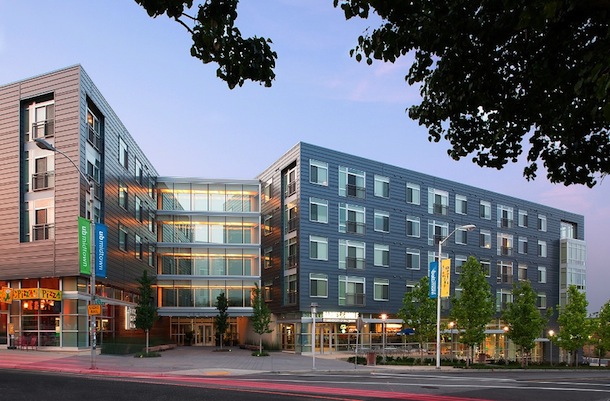
Metal wall panels on the front façade of the Fitzgerald convey a modern vibe. The splayed façade allowed architects to create unique floor plans, some with corner glass walls that offer panoramic city views. The Fitzgerald occupies a prominent location between the University of Baltimore and the Maryland Institute College of Art. It’s also across the street from the Lyric Opera and the Meyerhoff Symphony Hall.
Parking was significantly expanded to accommodate UB’s large commuter population. The Fitzgerald’s garage has a total of 1,245 parking spots, including several electric-vehicle charging stations — another first for the city. A total of 275 luxury apartments sit above 14,000 square feet of street-level retail. And there’s a plethora of transportation options nearby, including an interstate highway, a light-rail stop, bus routes, and Penn Station’s Amtrak trains.
“Our vision was that Oliver Street, the ‘front door’ of the site, could ultimately become retail-oriented since the UB students all park there and walk past it,” says Toby Bozzuto. The retail occupants include a restaurant and a Barnes & Noble bookstore.
The design was inspired by author F. Scott Fitzgerald and his wife, Zelda, who once lived in the neighborhood. “It’s decidedly modern and hip,” Bozzuto says. “We purposely created a product that didn’t exist in the marketplace: a cool apartment building with off-the-charts amenities.” The Fitzgerald has a 2,000-square-foot fitness center and yoga studio; three different lounges with fireplaces, billiard tables, and bars; an outdoor swimming pool and waterfall courtyard; a business center; and a meditation garden.
Architect Sam Rajamanickam of the Baltimore firm Design Collective says the shape of the site drove the design. “It has a short, steep front and it’s very deep,” says Rajamanickam. “So we splayed the front of the building to open it up.” A glass bridge connects the two wings and allows more daylight to penetrate the pool courtyard.
Since the Fitzgerald was completed two years ago, $182 million worth of new-construction projects and renovations have been initiated “on two blocks in a neighborhood that hadn’t seen much development in 30 or 40 years,” says Bozzuto.
Out With the Bad, in With the Good
Three years ago, the West Main Street neighborhood in Norwalk, Conn., was plagued by abandoned houses and drug activity. Then Seavest, an asset management company based in White Plains, N.Y., purchased approximately three acres and hired Summerview Development Group, Wilton, Conn., to build 63 townhouse-style rental apartments.
Summerview partners Andrew LaSala and Steven Berko worked hard to earn the trust of the neighbors, who were understandably fed up with the squatters and drug users living in the vacant houses. With the help of the West Main Street Neighborhood Association, Summerview Development cleaned up the area and then sat down to discuss redevelopment plans.
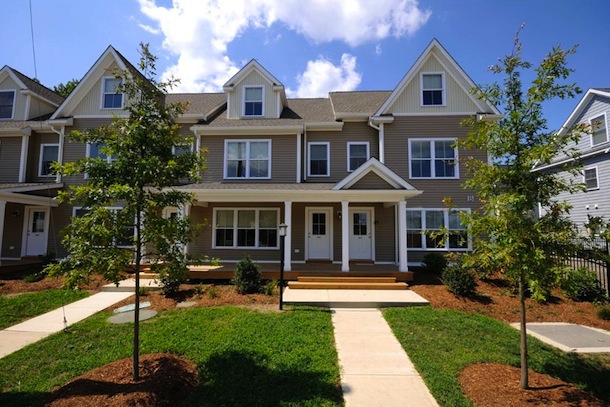
The Summerview Square apartments feature front porches, rear-loaded garages, and a mix of architectural styles that blend well with the neighborhood’s World War II-era, two-family homes.
“We decided that we were more or less going to re-create the architecture of the neighborhood,” says LaSala. To complement West Main’s World War II-era, two-family homes, The Sullivan Architectural Group of Fairfield, Conn., designed townhomes with front porches, front entrances, and rear-loaded garages. The exteriors are a mix of Victorian, colonial, and shingle styles and feature a variety of siding and roofing colors.
The apartments are more akin to condominiums with their heated private garages, washers and dryers, and spacious closets. While the project may be converted to condominiums in the future, the strong Connecticut rental market is driving its current success. Since phase one opened in 2010, rents have increased 20 percent. At press time, 31 units were leased and 32 were under construction.
Summerview Square borders a connector route to Interstate 95. Bus lines are a block away, including one that connects to the Norwalk train station, and shopping and restaurants are within walking distance.
“When we started there were a lot of empty storefronts on the next block,” says LaSala. “Now there’s a whole strip of eclectic, great restaurants, a new Minuteman Press franchise around the corner, a catering place, and various offices.” The new construction has also motivated existing homeowners to improve their residences.
Teaming Up With the School District
Abode Communities’ latest project is Rio Vista Apartments in the Glassell Park neighborhood of Los Angeles. It’s the first joint-use development in the county to pair affordable housing with an Early Education Center on surplus land provided by the Los Angeles Unified School District (LAUSD). The process was by no means easy, says Abode president Robin Hughes.
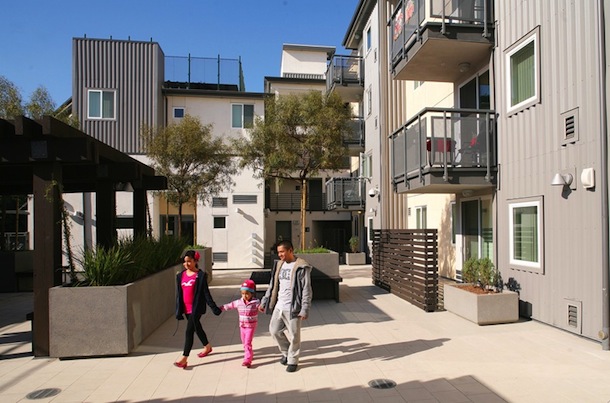
Rio Vista is a low-income rental apartment project built on land owned by the Los Angeles Unified School District. The building has two levels of parking — one ground level and one subterranean. Major bus lines are nearby.
“There was a lot of learning on both sides as we figured out how to take the complexity of our affordable-housing finance regulations and combine it with funding from the district,” Hughes says.
Abode signed a long-term ground lease with LAUSD for the property. The developer was able to secure funding from the California Department of Housing & Community Development through a proposition that supports affordable-housing production on infill sites along transit corridors. Stimulus funds were also available through the federal tax-credit program.
The residential component was designed and developed by Abode and consists of 50 rental apartments that are affordable to low-income families. The project is 100 percent leased and includes a community room, a playground, a computer lab, and a rooftop garden. Extensive on-site services are offered to both residents and community members through Abode’s Beyond Homes program, which operates in conjunction with 10 in-kind service providers. These include after-school programs, career counseling, and healthcare referrals.
Rio Vista, the fourth Abode project to be certified LEED Platinum, features a modern design that complements the surrounding uses, which range from light industrial to low-density residential. A ground-level parking garage tucked under the apartments maximizes the steeply sloped, 1.36-acre site.
“The neighbors were excited about Rio Vista because the property had been vacant for years, and many of them needed affordable housing,” says Hughes. “It has provided a really good neighborhood asset.”
Trust Is Essential
Peck has no doubt that there will be more infill development going forward because there’s so much demand and so little supply. “The reason more builders aren’t doing it is because they’re terrified of the rezoning process,” she says. “That’s why you have to have confidence in the municipal leaders. You have to have people you can trust to help you work out any issues that might arise.”
Yet there are intangible benefits to seeing through a difficult project such as Arbor Heights, Peck notes. “It was a really satisfying thing to see people become believers when they were such naysayers. We turned their perceptions around.”
Advertisement
Related Stories
Design
What Gen-Z Buyers Really Want in a Home
The fervor of planning for Millennials in the home building industry has now pivoted to Gen Z. So, what does this new generation want?
Design
The New American Home 2024: Modern Features, Timeless Comfort
Explore the design elements and unique, luxe details that combine to create a sense of comfort and relaxed indoor/outdoor living in The New American Home 2024
Design
4 Inspiring Adaptive Reuse Projects With Real Impact
From former schools to warehouses, these adaptive reuse projects—winners in the 2023 Best in American Living Awards—succeed in creating new housing and revitalizing their neighborhoods


